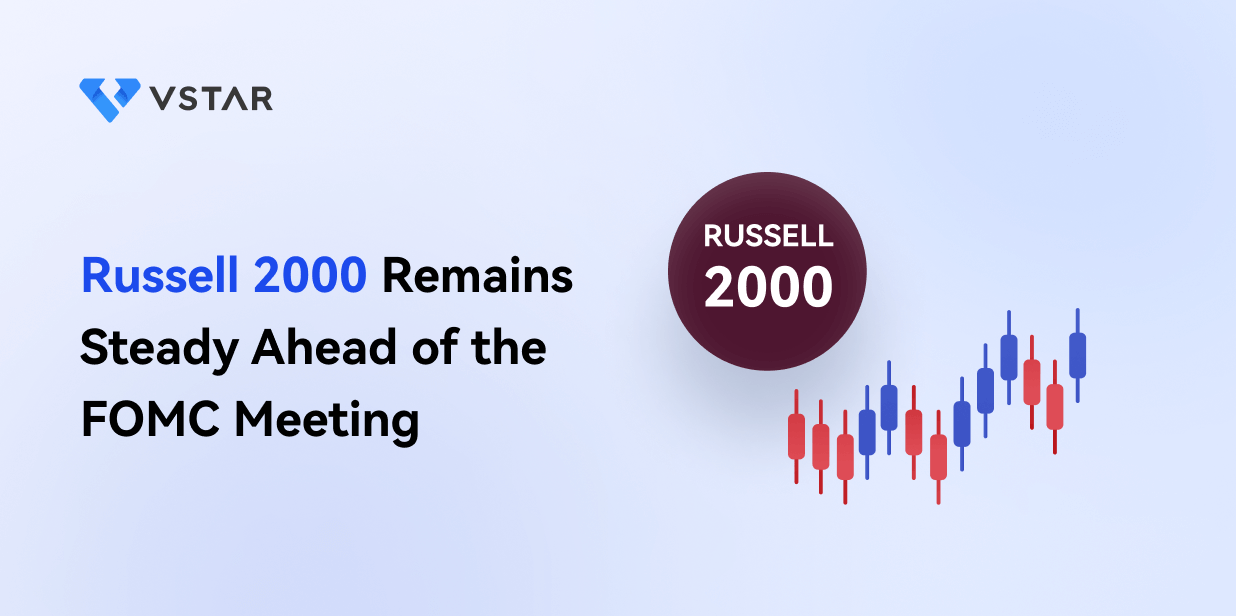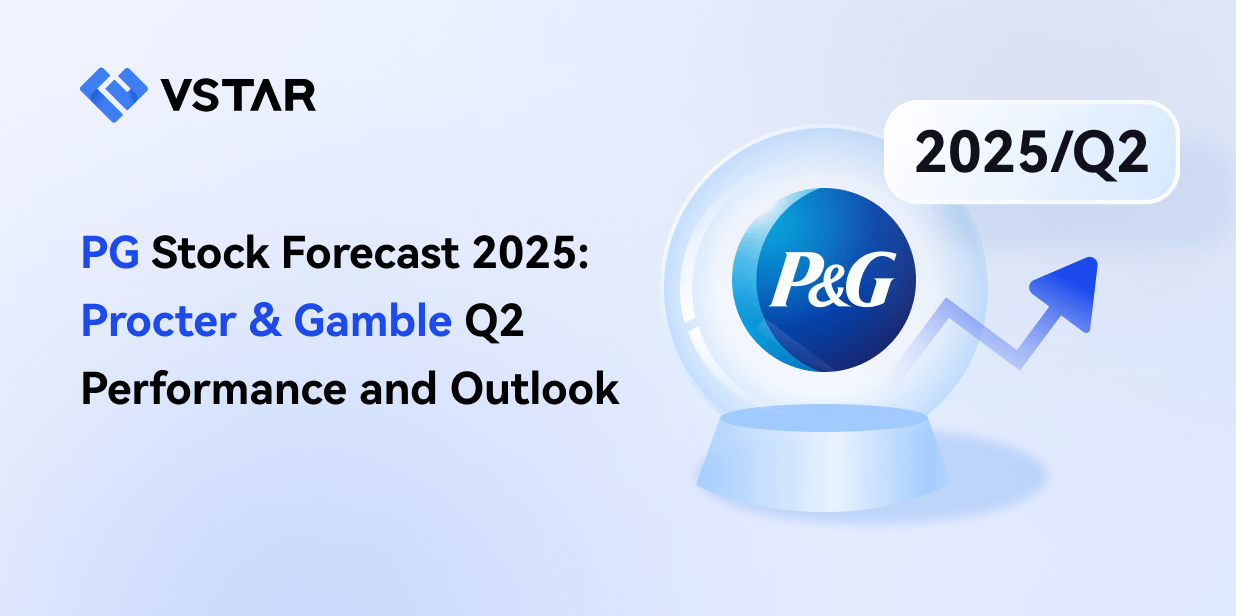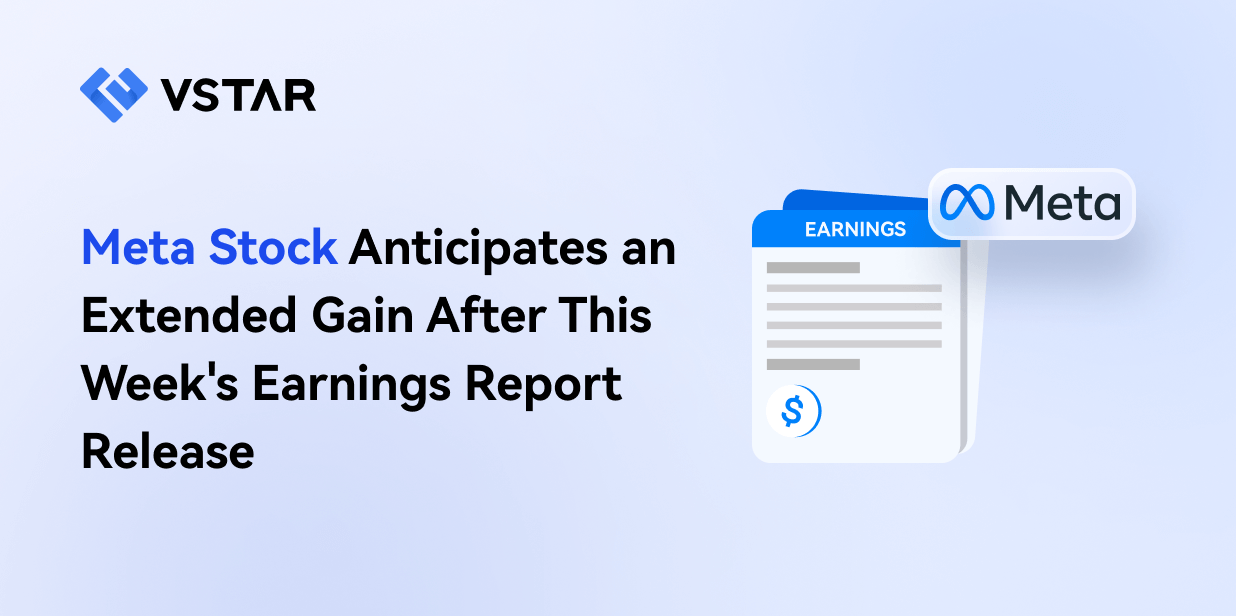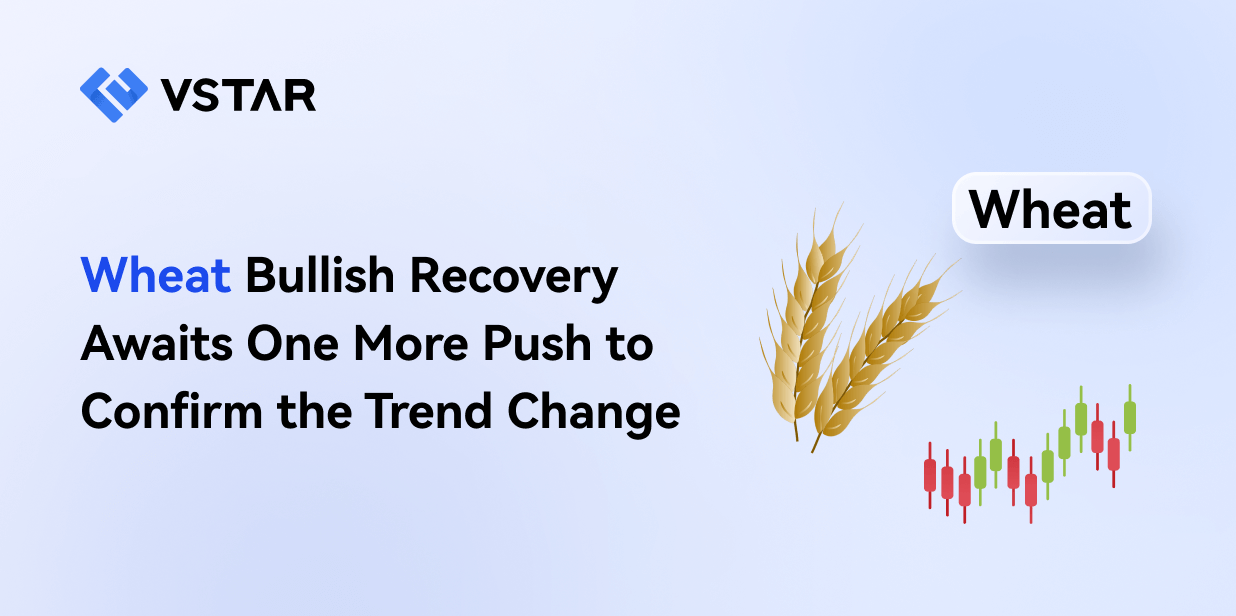The 4.23% weekly gain led to the biggest three indexes in the Russell 2000. Also, the upcoming FOMC meeting could be a crucial price director for the small-cap index. Primarily, a rate cut by the Fed could be a positive outlook, increasing the possibility of valid upward continuation.
How Rate Cut Could Help Russell 2000
The expectation that the Federal Reserve will soon start cutting interest rates is probably helping Russell. Smaller shares are thought to benefit from the move to cut rates, particularly those that have fallen behind in the face of higher rates—as long as the marketplace can stave off an economic slump that would hurt corporate earnings.
On Wednesday, the Fed is anticipated to begin a sequence of rate reductions following a hike in borrowing expenses to the highest point in almost twenty years. According to LSEG data, markets are factoring in about 250 basis points of alleviation by the close of 2025.
One of the main concerns for investors may be whether the Fed will decrease rates promptly to prevent an imminent economic contraction.
Rate Cuts Affect On Treasury Yield
Investing in bonds has proven profitable when rate-cutting cycles are just getting started. But this time, Treasury bonds are experiencing a significant rally, and some shareholders think that barring a recession, they are very unlikely to climb much higher.
When the Fed loosens its monetary policy, Treasury yields—which are inversely correlated with link prices—tend to decline along with rates. During times of economic turmoil, U.S. government bonds are a popular choice due to their reputation as safe havens. Twelve months after the initial cut, the Bloomberg U.S. Treasury Index got back 6.9% on average, according to Citi analysts, but 2.3% in "soft landing" financial scenarios.
Outlook For The US Dollar Index (USDX)
The way the dollar is going to respond to a Fed easing cycle has been influenced by the state of the economy in the United States and the policies of other central banks.
Deeper decreases from the Fed are frequently necessary during recessions, as declining rates make the dollar less appealing to yield-seeking shareholders.
According to Goldman Sachs' assessment of the ten previous rate-cut cycles, a year following the first period when the global economy was not in a downturn, the value of the dollar increased by an average of 7.7% towards a trade-weighted set of currencies. This contrasts with a 1.8% gain during the same period last year during which the U.S. experienced an economic slump.
Meanwhile, an additional Goldman Sachs evaluation shows that while the U.S. reduces alongside several central banks, the dollar is prone to perform better than other currencies. On the contrary, rate-cutting cycles in which the Fed moves in tandem with a small number of major banks frequently lead to worse dollar efficiency.
Russell 2000 Index Technical Analysis
In the Russell 2000 daily chart, the current price is trading within a bullish trend, where the most recent price showed a decent bullish recovery from the dynamic 100 day SMA.
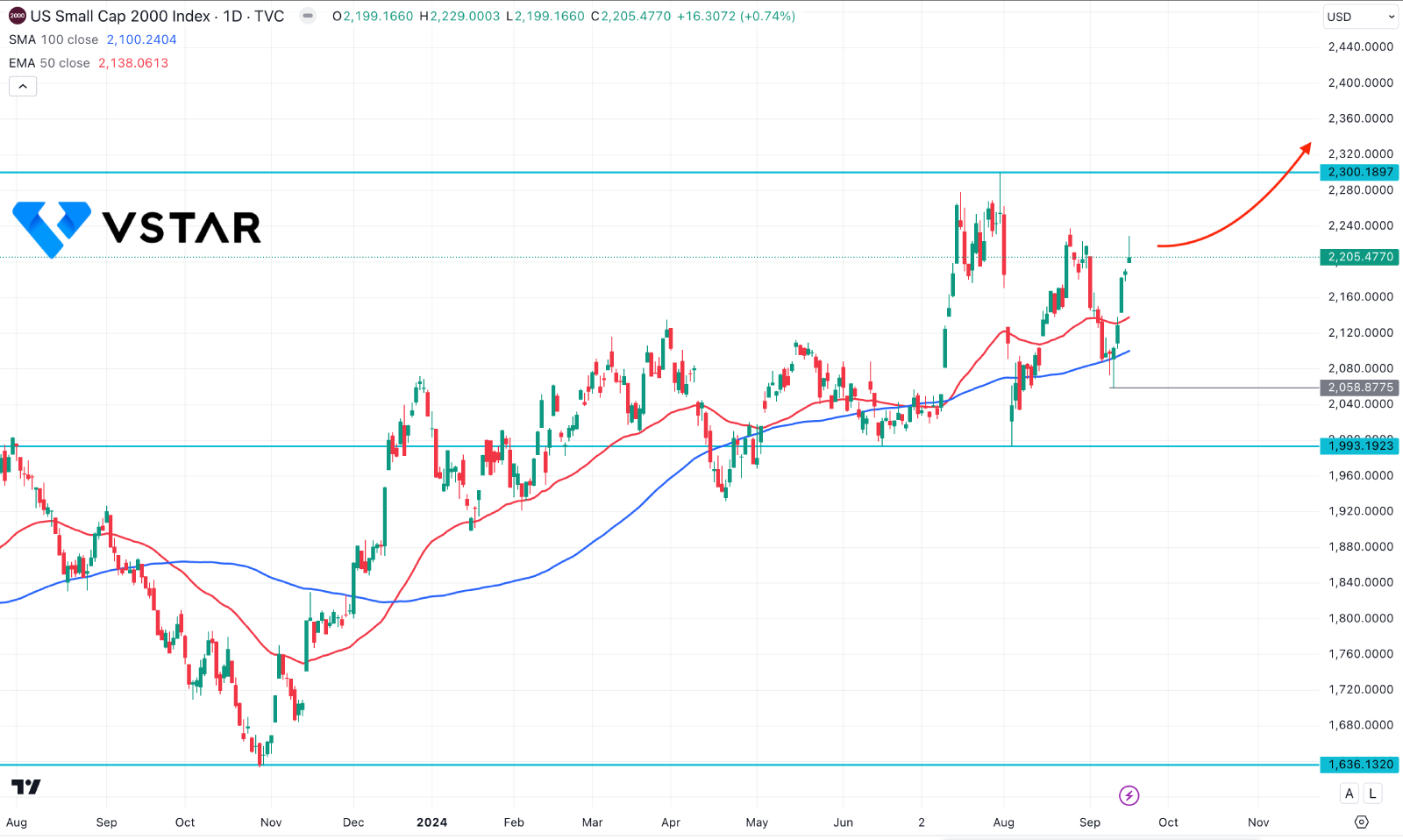
Moreover, the recent downside recovery with a bullish rebound from the 1993.19 support level indicates a valid bottom formation within an existing upward wave. In that case, investors should monitor how the price remains above the 50-day EMA line.
A consolidation with a bullish break above the 2300.00 psychological line could increase the buying possibility and extend the upward move beyond the 2400.00 area,
On the other hand, a downside pressure below the 100 day SMA could increase the downside possibility, aiming for the 1840.00 area.
